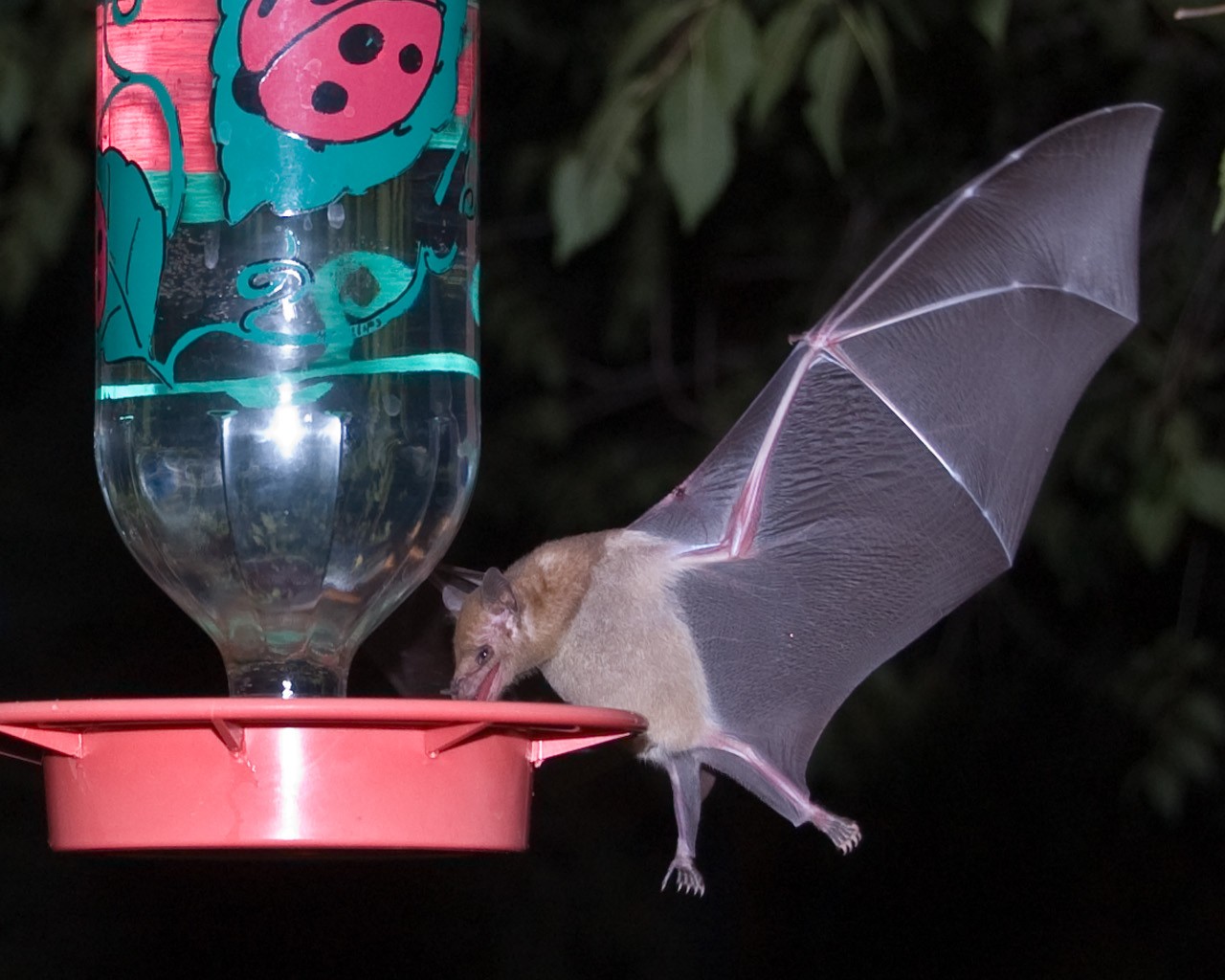Mexican long-tongued bat
A species of Mexican long-tongued bat Scientific name : Choeronycteris mexicana Genus : Mexican long-tongued bat
Mexican long-tongued bat, A species of Mexican long-tongued bat
Botanical name: Choeronycteris mexicana
Genus: Mexican long-tongued bat
Content
Description People often ask General Info
 Photo By Mexican_Long-Tongued_Bat_at_hummingbird_feeder.jpg , used under CC-BY-2.0 /Cropped and compressed from original
Photo By Mexican_Long-Tongued_Bat_at_hummingbird_feeder.jpg , used under CC-BY-2.0 /Cropped and compressed from original Description
The Mexican long-tongued bat is medium in size in the family Phyllostomidae. Its pelage can be up to 7 mm long and is typically gray to brownish but can be paler on the shoulders. Wings are darker brownish gray with paler tips. The ears will also have the same coloration as the body and will vary in size. The tail is short. Body weight is 10-20 g, with a maximum of 25 g in pregnant females. The species has a distinctly elongated snout tipped with a roughly 5 mm-long nose-leaf. The tongue is long, narrow and extendible, specialized for nectar feeding. It is covered with tiny hairlike papillae, which become more horny towards the base of the tongue. The skull is up to 30 mm long, with the rostrum making up 40-50% of total length. Juveniles have 22 deciduous teeth, which give way to 30 adult teeth. Like all microchiroptera, Mexican long-tongued bats use echolocation. They are especially sensitive to high frequencies (65–80 kHz) but have been found to respond to lower frequencies in the 5 kHz range. 
Size
9 cm
Colors
Brown
Bronze
Silver
Life Expectancy
8-10 years
Nest Placement
Cavity
Feeding Habits
Mexican long-tongued bat primarily feeds on nectar and pollen from agaves and fruits from various plants, using its long tongue for nectar extraction. It forages at night, displaying unique dietary preferences for certain plants.
Habitat
At altitudes of 300-2,400 meters in deciduous, semi-arid thorn scrub, mixed oak-conifer forests 
Dite type
Nectivorous
People often ask
General Info
Feeding Habits
Bird food type
Behavior
The species roosts in caves or abandoned buildings during the day. Individuals do not cluster together, hanging 2–5 cm apart suspended by a single foot, which allows them to rotate on their perch. If alarmed, they fly towards the opening and light rather than deeper into the roosting site. Females will carry young but only from one shelter to another. Migrations follow regional nectar availability. A key factor for migration in glossophagines over larger distances seems to be a large body size that permits storing energy for traveling over areas without available food. Following this idea, C. mexicana might be the larger, migrating version of the small, resident sister taxon Musonycteris harrisoni. Resident species (compared to a migrating species) may know their relatively small home ranges on a fine-grained level, including also locations of less-profitable food plant species. Migrating species, on the other hand, tend to focus on predictably flowering, high-quality resources (von Helversen and Winter 2003). 
Distribution Area
In the United States, this species is found in the southern parts of California, New Mexico and Arizona. It has also been reported from Texas. Further south, its range extends from Mexico (including Baja California and the Tres Marias Islands) through El Salvador, Honduras, and Guatemala. It occurs at altitudes of 300-2,400 meters in deciduous, semi-arid thorn scrub and mixed oak-conifer forests. Northern populations migrate south for the winter. 
Species Status
The species has been classified as Near Threatened by the IUCN due to ongoing habitat loss, which includes loss of roosting sites in caves to mining and tourism. It is regarded as a species of Special Concern on California and Arizona. 

 Photo By Mexican_Long-Tongued_Bat_at_hummingbird_feeder.jpg , used under CC-BY-2.0 /Cropped and compressed from original
Photo By Mexican_Long-Tongued_Bat_at_hummingbird_feeder.jpg , used under CC-BY-2.0 /Cropped and compressed from original Scientific Classification
Phylum
Chordates Class
Mammals Order
Bats Family
Leaf-nosed bat Genus
Mexican long-tongued bat Species
Mexican long-tongued bat